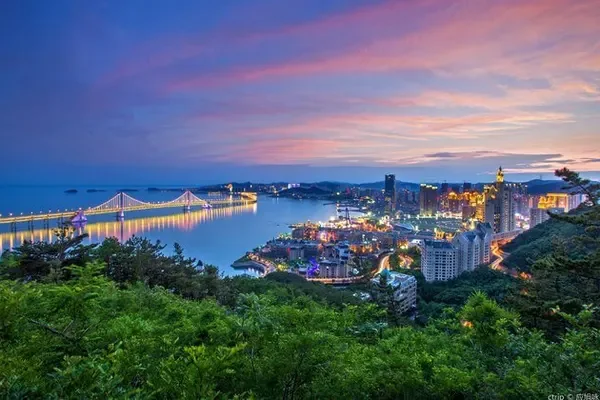After staying in Zunyi for one night, the next day was still cloudy and rainy. Our group decided to go to the newly opened Suiyang Shuanghe Valley Scenic Spot in Zunyi, which is also commonly known as Twelve Behind. Touring in rainy days is not affected by the climate in the cave. . Our car followed the navigation all the way and finally came to this place called "Behind Twelve". Behind the Twelve Tourist Scenic Area, under the jurisdiction of Shuanghe Cave National Geological Park, Guizhou Qingxi Gorge Scenic Area and China's Great Seam Scenic Area, covers an area of 600 square kilometers in Suiyang. Due to time constraints, we can only visit one of the most important scenic spots this time - the Shuanghe Valley scenic spot. When we arrived at the scenic spot, there were almost no tourists in the visitor center, and only a few cars were parked at the door. Maybe it was because of the rain, maybe it was not a weekend . But having said that, in the newly opened scenic spot, there is no travel agency organization, and the traffic is not perfect. It is normal that there are few tourists. This is also good, and it is more comfortable to play without other tourists disturbing us.
After buying the tickets, we enter the scenic spot. Not far from the gate is the traffic connection point of the scenic spot, and we will be taken to the entrance of the cave in the Shuanghe Valley scenic spot by a battery car.
We mainly look at the underground valleys, Shuanghe Valley sinkholes and underground terraces in the scenic area.
After getting in the car, the vehicle travels on the road between the mountains. The mountains on both sides are full of green, clouds and mist, and the air is fresh. It didn't take long to arrive at the entrance of the entrance of the Shuanghe Valley Scenic Area.
This scenic spot has one of the biggest features. The scenic spot is equipped with a tour guide. One is to explain, and the other is for the safety of tourists. There are countless holes in the cave. If you run out of the limit, you will not be able to get out. After waiting for a while, the tour guide took us along the plank road into this mysterious cave.
Because of the rain, there was a column of water falling continuously above the entrance of the cave.
The cave is intricate, but fortunately, the roads in the cave are well repaired, and there are guardrails on both sides.
In the Shuanghe Valley, the stone walls have various shapes and amazing textures, and the river water is green and deep.
Shuanghe Cave is "the longest cave in Asia", "the world's largest dolomite cave" and "the world's largest lapis lazuli cave". After years of joint scientific research by Chinese and French cave experts, as of March 2018, the proven length has reached 238.48 kilometers, surpassing Jenihe Cave in Malaysia and becoming "the longest cave in Asia".
Shuanghe Cave is the largest karst cave group in China, with a complex structure, water caves and dry caves coexist, with a depth of more than 550 meters. It consists of 8 main caves, more than 200 branch caves, 5 underground rivers, and 34 cave entrances. The composition can be described as hole-by-hole, hole-to-hole, hole-on-hole, hole-under-hole, and hole-in-hole. It is a veritable underground cave maze.
------Taken in November 2016 in Zunyi, Guizhou------
.
![[Suiyang Shuanghe Valley Scenic Area Underground Valley (Cave)]——Traveling Guizhou_Zunyi (19)](https://www.anyonetrip.com/uploads/202412/05/65fadc4e76c4ddc8.webp)
